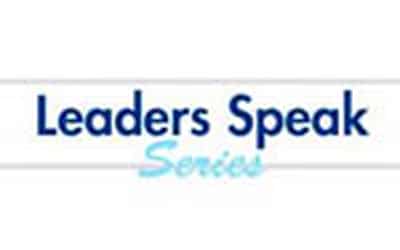So far, no FAR: A look inside one agency’s unique procurement shop
Imagine a federal procurement shop where you use every technique, except the Federal Acquisition Regulation. And you don't do grants, either. And you've got...
Imagine a federal procurement shop where you use every technique, except the Federal Acquisition Regulation. And you don’t do grants, either. And you’ve got congressional backing for your novel approach. That’s the case for one of the government’s newer agencies, the Advanced Research Projects Agency for Health, known as ARPA-H. For a look on the inside, Federal Drive with Tom Temin spoke with Diane Sidebottom, ARPA-H Director of Acquisition and Contracts.
Interview Transcript:
Tom Temin And I want to start with you because you came here already with a background in, let’s say, nontraditional or non ordinary types of procurements, specifically DARPA, after which all the other RPAs to some degree or modeled. So tell us what you’ve brought here.
Diane Sidebottom Yes, I’ve had an unusual career in many ways. I actually started out as a lawyer in the government, not a contracts person, but have been involved with contracts for over 30 years now. But when I joined ARPA originally back in 1994 was right when other transactions and some of the more innovative tools were really starting to make their way into the Department of Defense. So I was raised basically outside of the FAR in many ways and using these various tools for a variety of different research and development projects. And over my career have been involved ever since in making sure those tools remain active and available to us, but also are used properly. And I’ve gone to a variety of different agencies. I joined the Homeland Security ARPA when Homeland Security was first created and was able to forward the idea of other transactions through my work as a professor at DAU for a time. So that’s really been something that is close to my heart, is making sure that we have these tools available to us as the world evolves. We need to have different options.
Tom Temin All right, let’s talk about ARPA-H then, specifically. You acquire lots of things. Tell us the basic ways you do that. It’s not completely OTA either, though, is it?
Diane Sidebottom It is not. It is not. And we do still use procurement contracts on occasion. We’re just not going to use them much for research and development. We do have infrastructure acquisitions that we still have to do. But one of the things that we’ve noticed with the R&D community over time is that it’s really changed in how the players are getting involved in R&D, where, you know, if you think back 50, 60 years ago it was largely universities. That has changed since the late eighties, early nineties and is now more focused in many ways on companies and commercial entities doing R&D. When it was just universities, grants were great. Grants were created basically to work with universities to give them the money they needed to go out and do that good work that they were doing. But when you’re working with other organizations, grants are not necessarily the best tool. So one of the things we wanted to make sure for ARPA-H was that we had a variety of tools available to us, whether it’s cooperative agreements, other transactions. We’re going to do prizes and challenge competitions as a way to draw an interest to these various areas that we’re trying to focus on. And then there may be other tools that we create as we go along and as we see the needs. So we’re certainly not foreclosing that innovation in the contracting world going forward.
Tom Temin So to acquire research and development from the corporate world or the startup world, the non .edu world, let’s put it that way then that is principally with OTA.
Diane Sidebottom Probably will be that’s going to be our focus initially until we see that we need other tools potentially going down the pike. But so far in all my time at DARPA and some of these other organizations OTs have really been a very useful tool for dealing with companies, especially companies that are not used to dealing with the government and don’t have necessarily the framework or the internal structure that would allow them to easily work under the FAR and OTs give us that flexibility to negotiate. And that has really proven to be valuable to us.
Tom Temin In a detail when using OTA’s, because under the Labor Department OFCCP, they enforce a lot of the reporting and compliance requirements of contractors on things like their diversity and equity, their salary systems, whether they use a coal furnace, you know, in the basement of their building and so on. Does that also apply under OTA for these innovative companies? And if so, facing that, why would anyone want money from the government one way or the other?
Diane Sidebottom What OTs allow is they’re released from a lot of the acquisition statutes and regulations. That doesn’t mean there aren’t other statutes and regulations that still apply. And a lot of the things that you’re speaking of are requirements and regulations and statutes that apply to companies because they do business in the United States. It’s not unique to federal contracting. And so OTs will still have those as requirements. But if you looked at a standard OT, it wouldn’t really mention much of that because we assume the companies already know what they need to do in order to fulfill those statutory requirements for doing business here in the U.S..
Tom Temin We’re speaking with Diane Sidebottom. She is director of the Office of Acquisition and Contract at the Advanced Research Projects Agency for Health, ARPA-H. And maybe give us a couple of examples of the types of acquisition of non infrastructure stuff like bookcases behind you and, you know, maybe a computer for the office. But these types of innovative services or research and development items.
Diane Sidebottom Sure. Absolutely. So we have a variety of program managers that are going to be working with us and we’re recruiting even more. And our program managers bring to us their good ideas for new programs. And so when looking at these programs, that’s what’s going to guide us as to what vehicle there’s going to seem to be the best option. And what it will also look at is the team is performer teams that apply as to what makes the most sense for their particular setup. We are still in our infancy in many ways. We’re still bringing on program managers. We have put out a few solicitations so far. One was an open BAA and a BAA is a broad agency announcement that allows us to award potentially a variety of award vehicles depending on the performer. And we are funding several different programs under that particular open office BAA. And it’s open in that it’s not specifically targeted at any particular technology area, but it’s targeted at the overall mission space of ARPA-H. We also have put out a couple of program specific BAAs or solicitations. One is for a program called Nitro. Nitro is targeting osteoarthritis and coming up with new and innovative ways to deal with that. And because of that, we’re going to see a variety of different performers, both academia, for more early stage research, but also companies who are interested in this. And so that will drive a bit who who gets what vehicle, depending on what their focus is. We also have another solicitation out on the treat called PSI, P-S-I that is focused on cancer research, but focus specifically on targeting technologies that can help us find clean margins for cancer while people are being operated on so they don’t have to go back into the operating room. And so these are just a couple of examples of the kind of programs that we’re doing. But as new program managers come on and we are hiring program managers every month, sure to bring to our stable of good innovators, they’ll bring new and different ideas and will come up with new and different ways to both solicit. So we’re not wedded to BAAs necessarily, but we’re going to come up with our some of our own solutions as well as make awards.
Tom Temin And earlier, we talked about other transaction authorities or OTs, OTAs, but you also have cooperative agreements, intermediary agreements, partnerships. Maybe describe those a little bit for us.
Diane Sidebottom So we’re not going to do grants very often, not because grants are a bad thing, but because we want to have more interaction with a performer so the recipients than a normal grant would allow. And that’s really the difference between grants and cooperative agreements. Functionally, they look very similar. It’s just that with a cooperative agreement, we get to have a lot more day to day interaction with those performers. So the recipients and so our program managers like to have that kind of involvement. We want to have a more collaborative kind of space when we deal with our teams. And so that’s why we’re going to focus more on the cooperative agreement side. We also have partnership intermediary agreement authority that allows us to reach out to non-profits who can help us get more access to communities and also help us transition some of the technology that we might develop out into the private sector. That’s what peers are really for, is to be that facilitator, that intermediary that helps the government find some of these resources and allows us to find unique groups that we might not ordinarily draw into government contracting like small businesses and maybe startups. We’re also want to focus on some of the more unique groups like HBCU’s and minority institutions that oftentimes are not real large participants in the space. And so the PIAs will help with that. We have two PIAs that we have signed with two nonprofits and plan to do two more. And then we also will have some prizes and challenges that we’ll put out that will be sort of pie in the sky in many ways, challenges out to the community and hopefully we’ll get some people who are interested in that, who will then come in and compete for that prize. Following along with the legacy of several different agencies who have taken up the prize mantle and do quite a lot of those. So we want to try to use a variety of different methodologies that would appeal to a variety of different groups throughout the market space.
Tom Temin Prize mechanism might be used for coming up with a cigarette package sized dialysis machine that you can hang in your pocket.
Diane Sidebottom Mm hmm. There are often those really difficult technology challenges that we don’t necessarily expect people to be able to meet. But want to drive people to start working towards them and making those strides if they can.
Tom Temin And what are the government protection mechanisms or the off ramps? You know, under regular FAR procurements, you can cancel for convenience. You can have people disbarred or, you know, in extreme cases. But there are ways out under FAR. Do you have those protections in these other ways of doing business?
Diane Sidebottom Absolutely. So cooperative agreements have a regulatory structure that allow for many of those same off ramps that procurement contracts would. With our OTs we very strategically negotiate in terms and conditions that give the government the ability to leave at various points, but also in many ways leave the performer the opportunity to leave as well, especially in those scenarios where there might be some level of cost sharing, or resource sharing involved. Obviously, there are certain laws. We’re still the government, we still have appropriated funds that we’re using. So we need to have some of those basic off ramps that allow us to do that. But we also will have the opportunity to leave if it looks like the investment is not leaning towards the solution or a solution that’s going to happen in the near term. We also, with our OTs, use a payment mechanism called payable milestones that allow us to tie payment to performance and it gives us nice go and no go points throughout the program and tracks progress to see whether or not this is something that’s actually going to work or it’s going to be something. Maybe the question is just too hard and the technology’s not ready yet. It’s nobody’s fault. And many of our performers may be commercial companies who may not see a commercial avenue for this and therefore are not interested in just the government space. There’s a wide variety of reasons why people may walk away, but our OTs are specifically negotiated to make sure that we have those off ramps if we need them.
Tom Temin And finally, what are some of the human capital challenges you have for the acquisition and contracts office there? Because the average 1102 trained in the FAR over 20 years may not be the right cat to kind of pick up this type of approach, or are they?
Diane Sidebottom Absolutely. Well, I mean, it’s not even necessarily anyone’s fault. It’s that the training that people have to go into the FAR-based world is different than the kind of focus that you would have, you know, using an OTA. One of the things we are going to do, much like DARPA has done, is focus on higher graded folks, folks more at the 1415 level who have a lot of experience in doing acquisitions already and understand the business background of doing an acquisition because that will help them negotiate. OTs fortunately have become much more mainstream in many organizations, not only DOD, but 11 other agencies have already authority of some variety. So that has helped a lot with getting the word out there and getting a lot of the training out there and letting people understand how OTs work. So we’re finding that that’s helped quite a lot, but we’re going to do a lot of mentoring as well internally, bring people in at a lower level who we can grow and develop that mindset. And fortunately, having been an ex professor of OTs at DAU, Ihave a lot of background in this and so we definitely have a plan.
Tom Temin So the professorial role doesn’t end because you are now running a contracts office.
Diane Sidebottom It never ends.
Copyright © 2025 Federal News Network. All rights reserved. This website is not intended for users located within the European Economic Area.
Tom Temin is host of the Federal Drive and has been providing insight on federal technology and management issues for more than 30 years.
Follow @tteminWFED






